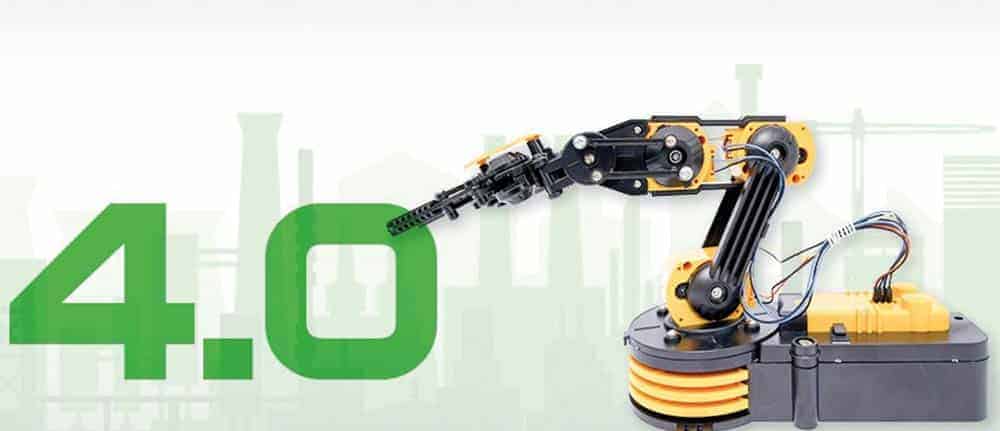Digital Expertise—Compartmentalizing Complexity


Fair enough, but, as our experience shows, the actual implementation of digital expertise and new technologies is often the biggest challenge. Many companies know that they have to do something, some even have come up with a digitalization strategy already. However, they often lack clear guide lines and priorities.
Simple questions are met with confusion. Where should we start? What do we want to achieve? How long should projects last? If companies do neither have answers to these questions nor a competent partner at their side, they often get bogged down in details faster than the CEO can free up the budget.
However, it doesn’t have to be like this. 2019 can be the year companies finally embrace a digital transformation strategy by following simple rules and steps.
Three pillars, three steps
More often than not, IT managers have a truly Herculean task ahead of them. The entire product lifecycle management has to be changed, real-time data from manufacturing to logistics and service have to be collected. On top of that, everything’s supposed to work across different platforms, systems, and departments. All of these things can be done—only condition: digital continuity in the product development process, or smartPLM.
Here’s just one of many examples as to why this continuity is so important: if Amazon guarantees same-day delivery, and digitally optimizes every logistics process except one, all of its efforts are not enough. At the precise moment digital continuity stops, the concept of same-day delivery will fail, and the customer will not be satisfied. A chain is only as strong as its weakest link, after all.
Such a digital continuity as we are proposing also means higher criticality of system availability and often more complexity. Therefore, reference models are crucial to recognize interdependencies in data structures and processes and guarantee unobstructed daily operation.
Digital transformation relies on three pillars: virtual product, digital process, and autonomous production. The goal should be to realize one of these pillars at a time. The formula for success is therefore to compartmentalize the complexity surrounding them. There are three steps to take: coming up with a digitalization strategy (in line with corporate strategy), defining goals and milestones, and think about how to split projects up.
Don’t be fooled by how self-explanatory or obvious these steps seem. We’ve seen countless transformation projects fail simply because this structure was missing. Many companies might have a digitalization strategy, but they only let their staff work on one big project dubbed “digitalization”. This strategy will not do anything for the company other than waste money and time and frustrate or stress out loyal and competent employees.
Instead, companies should think about how to split big projects up. The smaller projects this approach inevitably creates should be reasonable and clearly separated from one another, and have a distinct goal, budget, and time frame. The most crucial aspect, however, is that smaller projects generate visible value and do not take longer than three to six months. If this time frame is not adhered to, companies will struggle to retain team and management motivation, one of the most important things for every project involving change. Furthermore, companies should not think in departments, but in processes, therefore guaranteeing creativity and diversity during projects.
Now, just a little word of advice: what we are proposing is a top-down approach, and in most cases, it is indeed successful. However, depending on how your company works or what your employees require, a bottom-up approach or a mixture of both could instead be right for you. For example, we often see that after a specific area or department have been digitalized, new ideas and concepts for digital optimization of business processes come up based on practical experience.
This happens regularly after we’ve implemented our solution for controlling and monitoring processes in one or more departments. The obvious advantages of a process-driven workflow quickly inspire ideas for application in other areas. Therefore, we recommend a dual strategy and that companies combine both approaches for maximal benefit.
A chance for mid-sized companies
By the way, digital transformation will be the most profitable for mid-sized business. It’s reasonable to ask why. On the one hand, cloud-based solutions often fit their requirements perfectly, making it easier for them to adopt them. On the other hand, simply because of size and scope, mid-sized businesses have it easier than their bigger competition to involve every head of department in the discussion about digitalization. This lets them ideate, create, and digitalize new business processes based on customer wishes and needs.
One recent example would be a family-owned, mid-sized machine manufacturer, a partner of Cenit. After only few and efficient discussions with its management and heads of departments, we had agreed on a consensus. Digital continuity has become more and more relevant in recent years and will continue to gain importance if the individualization of customer-specific machines also means numerous variants and changes. Consequently, the value chain will become unmanageable.
Together with the machine manufacturer, Cenit quickly found the weak links in the chain, devised reasonable actions based on these findings, and came up with a solution architecture. The machine manufacturer then agreed to the project planning. Consequently, the customer became ready to grow—meaning that the company was ready for a comprehensive and sustainable digitalization strategy.
A prerequisite for such a quick and easy digital transformation is the motivation and willingness of management to change. Management has to be engaged in project planning, funding, and scheduling. On top of that, it has to take up some projects as well. That’s because digitalization is a management issue, and true process optimization always brings about significant changes as well. Employees might be anxious or even scared. Professional change management therefore has to be a fixed part of every digitalization project.
Too many standard processes?
When we are helping customers with their digital transformation, one question always comes up: how standardized is corporate IT really, and how standardized does it have to be? We recommend that 80 percent of core processes should be standardized, while a maximum of 20 percent can be individually adapted software. However, customers should be aware that for every new percent of individualized software, they also have to deal with its disadvantages concerning implementation rate, robustness, and updates.
IT managers should keep in mind that leveraging cloud applications will contribute massively to the already growing trend of staying within the standard. Major platform providers secure their digital core, and provide customers with software in ever-shorter cycles. During a deployment cycle lasting 24 hours, traditional update preparations often lasting months, like you would have with individually adapted solutions, are simply impossible.
No digital continuity whatsoever can be tolerated only if the number of product variants is not too big. However, complex products are in demand, and will continue to be for years to come. Platform ecosystems are the better option because companies can scale them.
Based on our experience that we gained during more than 200 projects in different areas and disciplines of the manufacturing industry, we developed a comprehensive approach, ranging from project planning to system packaging and configuration. Especially customers who want to reach their goals fast can profit from a preconfigured solution based on SAP or 3D Experience Platform. This platform contains all typical PDM functionalities, supports core engineering processes, and prepares hand-overs to production, for example through controlled release and change management.
Conclusion
In 2019, digitalization will be more important than ever for companies wanting to maintain their competitiveness. That’s because many companies that were founded in the digital era are currently flooding the market.
While companies can get the edge over similar rival companies with traditional values like efficiency, cost reduction, and shorter processing times, the new competitors will not be done away with that easily. For example, what could Nokia have done against Apple by reducing prices and increasing production? This means that digitalization plays a major role in creative processes, vision, flexible organization, and sustainable business processes.
The ROI of digital transformation can therefore not only be seen in increased efficiency or reduced processing costs, but also in completely new streams of revenue which could never have been realized under the old business model. Now, companies only have to start their journey.
We recommend a combination of two typical approaches. On the one hand, you have to have traditionally American courage to start doing and accept failures as part of learning. On the other hand, you have to leverage a distinctly German diligence when looking for interdependencies and defining goals.







